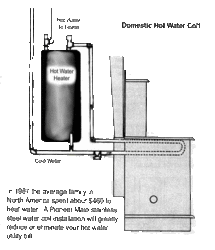electrathon
Minister of Fire
Every one I have worked on has a cross over line between the two tanks so there is a loop or they had a separate tank that was a loop as well I agree the system shown with two unconnected tanks doesn't make sense. But that is not what I have seen in the field.
I agree without a crossover between the tanks it wont be as functional but I don't see the danger you are seeing at all.
The fact that this system is tested and works to supply all of the hot water for families not just to preheat their water.
The danger is without circulation you are boiling water in the coil and still have cold water in the tank. The danger of scalding is off the chart. The system is not safe as set up. I agree, you may get away with it, just like smoking and not wearing a seat belt.
It seems like you have not read most of our conversations over the last year. My coil can easily be moved into the firebox and it would skyrocket the BTU transfer. Remember how you keep saying that is not safe (like in the stove we are talking about)? Cooling of the combustion area of the stove can increase creosote build-up and stovepipe emissions. I get virtually all of my heat from the wood stove in the winter time. It is necessary to use a preheat tank so that I did not have to burn my stove all summer long.
The fact that the system functions does not make it safe. I have personally seem hundreds of stoves that are installed in a manor you feel are unsafe (can we say barrel stove) that have been used to heat houses every day for years/decades without a single issue.


